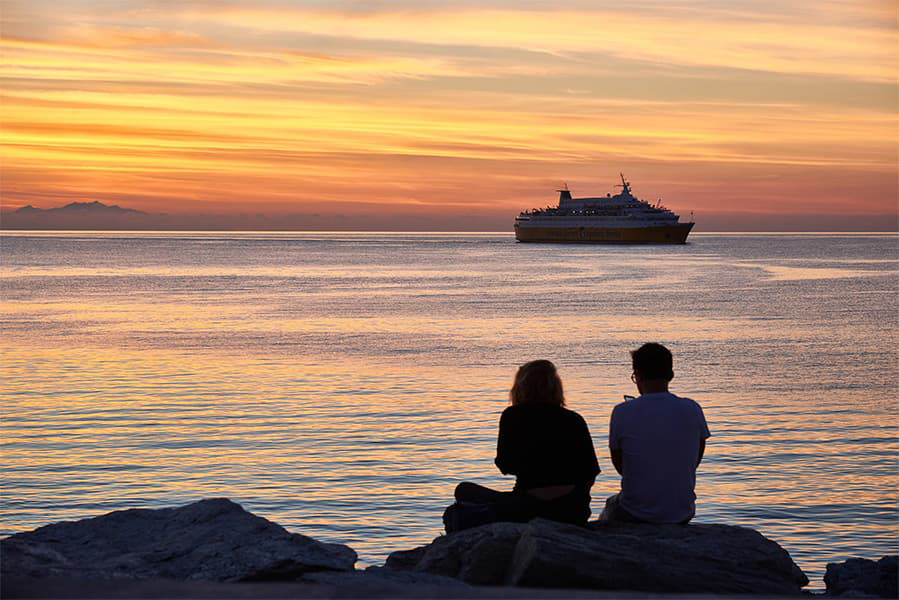Tallinn - St Petersburg
Ferry to Russia
Tallinn - St Petersburg
Ferry to Russia

Get the best deals on ferry crossings between Estonia and Russia on the Tallinn to St Petersburg ferry route with Direct Ferries and compare alternatives where available too.
We get live Tallinn to St Petersburg ferry prices directly from ferry company reservation systems and compare all options ensuring you find the best deal for your crossing. Getting a price and booking your ferry ticket to Russia couldn’t be easier!
Getting a quote or booking a ferry to Russia couldn't be easier. All you need to do is select Tallinn to St Petersburg from the menus to the left, select the number of passengers and hit search!
More routes than anyone else.

Compare fares, times & routes in one place.
Change plans easily with flexi tickets.

Book e-tickets & manage trips in-app.
Live ship tracking & real-time updates.

Top-rated customer support when you need it.
Tallinn is the capital city and main seaport of Estonia. It is located on Estonia's north coast to the Baltic Sea. It has been shaped by nearly a millennium of outside influence. Its name, derived from taani linnus , meaning "Danish Fort", is a reminder of the fact that the city was founded by the Danes at the beginning of the thirteenth century, and since that time political control has nearly always been in the hands of foreigners - Germans, Swedes and Russians. The Germans have undoubtedly had the most lasting influence on the city; Tallinn was one of the leading cities of the Hanseatic League, the German-dominated association of Baltic trading cities, and for centuries it was known to the outside world by its German name, Reval. Even when Estonia was ruled by the kings of Sweden or the tsars of Russia, the city's public life was controlled by the German nobility, and its commerce run by German merchants.
With a colourful past stretching back to its eponymous founder Tsar Peter the Great in the 1700s, the city of Saint Petersburg is widely considered the cultural and historical capital of Russia. Situated at the far-eastern end of the Gulf of Finland in the Baltic Sea, the metropolis is home to a plethora of international banks and businesses as well as a major seaport that specialises in the export of gas and oil throughout Europe. The clash of architecture found in the city centre is testament to its multifaceted past. The monumental Winter Palace, once the home of Russia’s monarchs, is a dramatic Baroque structure on the shores of the palace embankment, while the gold-trimmed bell towers of the Smolney Convent to the south of the Neva river soar into the Russian skyline. The port of St Petersburg is located on the western edge of Vasilevsky Island, a district of the city that is separated from the mainland by a fork of the Neva River. There is no overground train to the island, though an underground line runs from the south of the city to Primorskaya station just a half an hour walk from the harbour. Buses and Marshrutkas (city mini-buses) regularly make the short trip over one of the island’s four bridges too, taking passengers within minutes of the ferry terminal from stops across the city. The cruise terminal, named Marine Façade, won the Best Port award in 2009 due to its comfortable, modern facilities that allow for the smooth handling of passenger traffic. The large building houses a cash machine, post office and souvenir shop, as well as a designated meeting spot for tour guides who offer trips through the historic streets of St Petersburg. Ferries operated by St Peter Line leave the port a number of times throughout the week. All of the routes sail west across the Baltic Sea to stops in Stockholm, Sweden; Helsinki, Finland; and the multiple day trip to Tallinn in North Estonia.